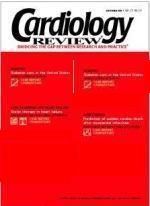Publication
Article
Cardiology Review® Online
Case report: Statin therapy for an elderly heart failure patient
A 72-year-old man with a history of coronary artery disease (CAD), coronary artery bypass graft surgery, diabetes, hypertension, and systolic dysfunction heart failure sought treatment for heart failure.
The patient’s activity level had been severely limited during the past year, and he had stopped working in his retail business because of fatigue. After walking one to two blocks, he felt dyspneic and had to rest. He slept on two pillows but reported no paroxysmal nocturnal dyspnea or extremity swelling. There was no history of chest pain, lightheadedness, palpitations, or syncope. His medications included carvedilol, 25 mg twice a day; captopril, 50 mg three times a day; furosemide, 80 mg per day; spironolactone, 12.5 mg per day; enteric-coated aspirin, 325 mg per day; and glyburide, 10 mg a day. There had been no changes in his medical regimen in the previous 6 months. He carefully limited his salt and water intake.
Results of physical examination showed a pulse of 69 beats per minute, blood pressure of 98/60 mm Hg, and respirations of 16 breaths per minute. The patient’s weight was 135 pounds, unchanged from previous measurements. He had mild truncal obesity. There was no jugular venous distention. His heart rate and rhythm were regular, with a 2/6 systolic murmur at the apex and a soft S3. The lungs were clear on auscultation. No lower extremity edema was present. The plasma brain natriuretic peptide (BNP) level was 1,910 pg/mL. The fasting lipid panel showed a total cholesterol level of 167 mg/dL, a low-density lipoprotein (LDL) cholesterol level of 105 mg/dL, a high-density lipoprotein (HDL) cholesterol level of 35 mg/dL, and a triglyceride level of 133 mg/dL. The creatinine level was 1.4 mg/dL, and the glycosylated hemoglobin level was 7.1%. Echocardiography showed a left ventricular end diastolic dimension of 50 mm and a left ventricular ejection fraction of 20% to 25%, with global hypokinesis and akinesis of the apex. Moderate mitral and tricuspid regurgitation was present.
Cardiac catheterization with the potential for revascularization was discussed with the patient, but he was extremely reluctant to undergo any invasive procedures. He similarly declined implantable cardioverter—defibrillator therapy. Atorvastatin, 40 mg per day, was started.
Six months later, the patient reported feeling less fatigued. He was able to return to work 1 to 2 days per week. His exercise capacity had increased to three to four blocks before shortness of breath occurred. Results of his physical examination were unchanged from the previous examination, except for the absence of S3 on cardiac auscultation. A repeated lipid panel showed a total cholesterol level of 139 mg/dL, LDL cholesterol level of 79 mg/dL, HDL cholesterol level of 35 mg/dL, and a triglyceride level of 129 mg/dL. The plasma BNP level was 234 pg/mL. Echocardiography showed an increase in left ventricular ejection fraction to 35% to 40%, with hypokinesis of the inferior wall and apex. The left ventricular end-diastolic dimension was 47 mm, and the mitral regurgitation was mild.
This patient was treated with a statin drug for management of CAD and diabetes in the presence of severe ischemic cardiomyopathy and clinical heart failure, despite a baseline LDL cholesterol level close to the National Cholesterol Education Program Adult Treatment Panel III goal of below 100 mg/dL. He tolerated statin therapy well, and his functional capacity also improved. Echocardiography after 6 months of statin treatment showed some reversal of pathologic remodeling, as indexed by left ventricular end-dia-stolic dimension and left ventricular ejection fraction. Although it is possible that these improvements were unrelated to statin treatment, there had been no other recent changes in his heart failure medical regimen. In experimental models of heart failure, statins have limited remodeling and improved survival. Prospective clinical trials are warranted to further assess the role of statins in the treatment of heart failure.





